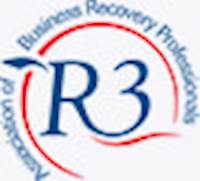Where the company is insolvent (can’t pay its debts), a creditors voluntary liquidation (CVL) is used to achieve liquidation. This is not the only solution though to creditor pressure. With advice from insolvency practitioners (like us), a company voluntary arrangement (CVA) or a pre-pack / company administration could still allow for turnaround.

Creditors voluntary liquidation benefits
- A CVL prevents further losses being incurred, acting in accordance with director duties.
- Allows for a speedy resolution and remote attendance.
- The liquidator has the responsibility of dealing with the creditors and employees.
- As directors have control, they can choose their liquidator and will deal with the same appointed Insolvency Practitioner throughout the CVL process.
- Directors can share information with creditors by way of a company trading history and a statement of affairs, providing clarity.
- A CVL enables employees, including directors in some circumstances, to claim: unpaid wages, outstanding holiday pay, compensation for loss of notice and redundancy pay.
- If the directors, shareholders or even employees wish to purchase assets, this can be discussed with the liquidator, as can any offers from an independent agent.
- 6 benefits of choosing us for your creditors voluntary liquidation.

Creditors voluntary liquidation costs
What a CVL costs & funding a CVL.
Creditors voluntary liquidation process
At its start..
A creditors voluntary liquidation requires trading to cease as soon as possible to avoid wrongful trading. A special resolution will be passed at a general meeting of the members to confirm the company can’t continue due to it liabilities and a licensed insolvency practitioner is appointed as liquidator. Any redundant employees with two years of service (including directors) will receive payments from the Redundant Payments Office (we can help with this).
During a creditors voluntary liquidation
The creditors will also have the opportunity to attend a virtual meeting by means of a conference call to consider resolutions. The creditors will have been provided with a report and a statement of affairs prepared by the directors.
At its end.
The liquidator will realise the assets and make a distribution to creditors where possible. Once the liquidation is concluded, the company will be dissolved.
In a creditor voluntary liquidation, the Gazette is used to give notice of the special resolution to wind up the company voluntarily.
A final note, the majority of directors after a CVL are able to setup a new company.
How long does a creditors voluntary liquidation (CVL) take?
The appointment of a liquidator in a CVL (which means that the powers of the directors cease) would normally take 1 to 2 weeks.
Should more than 90% of shareholders of a limited company (95% for a PLC) agree to short notice (which in effect waives any notice they were entitled to), liquidation can occur within 7 days. This being the minimal statutory notice for creditors.
Note, this is solely the time it takes to place the company into liquidation. Once appointed the liquidators must file the necessary paperwork, secure and sell any assets the company has, complete an investigation in respect of the company affairs and conduct, review and agree creditor claims and distribute available funds to creditors should funds permit. This can take 1-2 years or even longer. The larger the CVL, the longer it takes (typically).
What is a creditors voluntary liquidation? A solution to creditor pressure.





